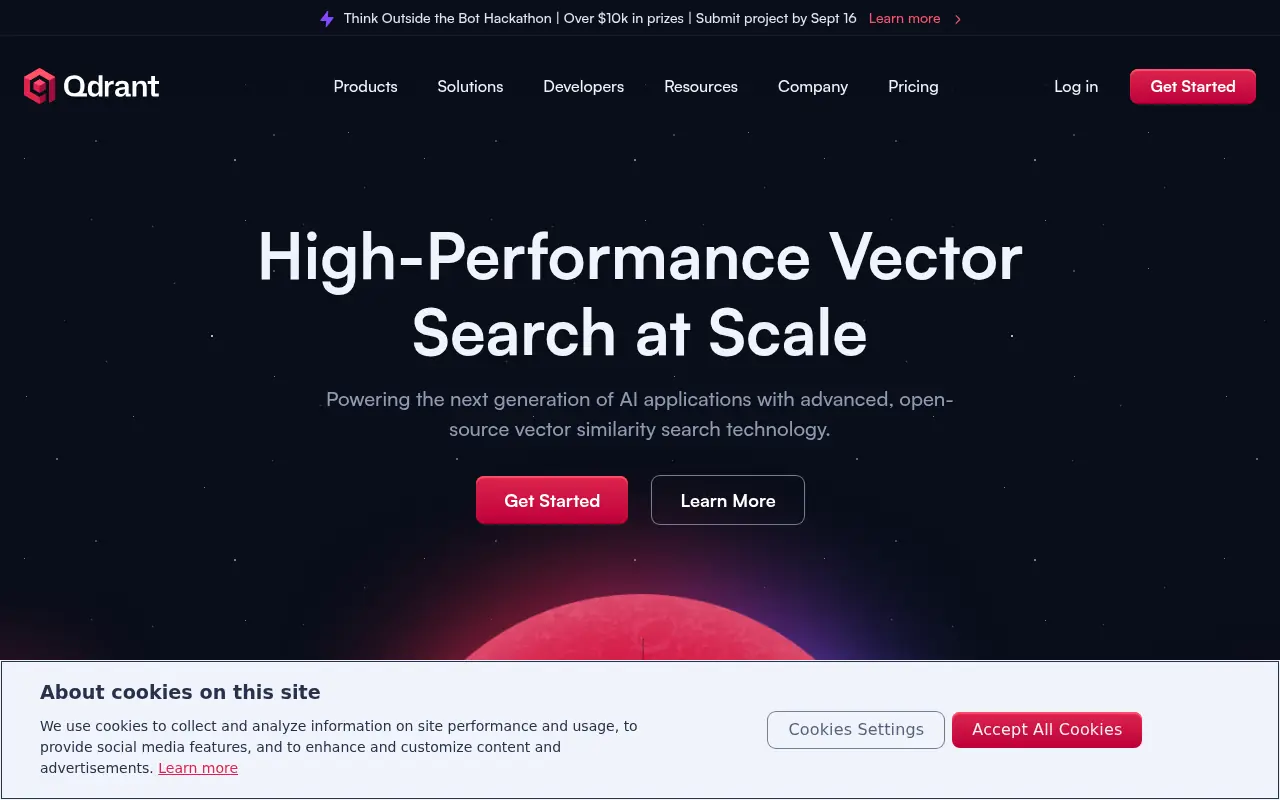Qdrant
Open siteWhat is Qdrant?
Qdrant is an open-source vector database that enables efficient similarity search and retrieval of high-dimensional data, making it ideal for AI-driven applications like semantic search and recommendation systems. Its mission is to provide developers with a scalable, performant tool to handle vector embeddings generated by machine learning models, solving the challenge of managing large-scale vector data in real-time. By offering both self-hosted and cloud-based options, Qdrant serves users ranging from individual developers to large enterprises, facilitating seamless integration into AI pipelines. It addresses problems such as slow query times and high resource consumption in traditional databases by using advanced indexing techniques like HNSW (Hierarchical Navigable Small World) graphs. Overall, Qdrant empowers AI innovation by making vector search accessible, fast, and reliable.
Qdrant's Core Features
High-performance vector similarity search that enables sub-second query times even on massive datasets, benefiting AI applications requiring real-time responses.
Support for hybrid search combining vector and keyword-based queries, allowing users to build more accurate and flexible search systems.
Scalable architecture with clustering and sharding capabilities, ensuring the database can handle growing data volumes without performance degradation.
Payload storage alongside vectors, enabling users to associate metadata with embeddings for richer data retrieval and filtering.
Advanced filtering options that allow precise querying based on conditions, enhancing the relevance of search results in complex scenarios.
Open-source core with optional cloud hosting, providing flexibility for self-managed deployments or managed services with minimal setup.
Integration with popular AI frameworks like Hugging Face and LangChain, streamlining the development of embedding-based applications.
Quantization and compression techniques to reduce memory usage while maintaining search accuracy, ideal for resource-constrained environments.
Real-time updates and indexing, allowing dynamic data insertion without downtime, which is crucial for live AI systems.
API-first design with SDKs in multiple languages, making it easy for developers to integrate Qdrant into their existing workflows.
Monitoring and visualization tools to track database performance and query analytics, helping users optimize their AI infrastructure.
Frequently Asked Questions
Related Tools

Atlassian offers collaboration software for software development, IT, and business teams, featuring tools like Jira and Confluence enhanced with AI capabilities.

ClickUp is an all-in-one productivity platform designed to align, collaborate, and enhance work efficiency, aiming to save teams a day every week by consolidating projects, knowledge, and conversations into one app.

Adot offers decentralized AI-powered search tools and e-commerce solutions focusing on Web3 discovery and smart automation for enhanced online experiences.

Genspark is an AI-powered search engine that delivers personalized, curated answers using specialized AI agents.

SciSpace is an AI-powered platform that streamlines academic research by helping users discover, analyze, and create research papers efficiently.

